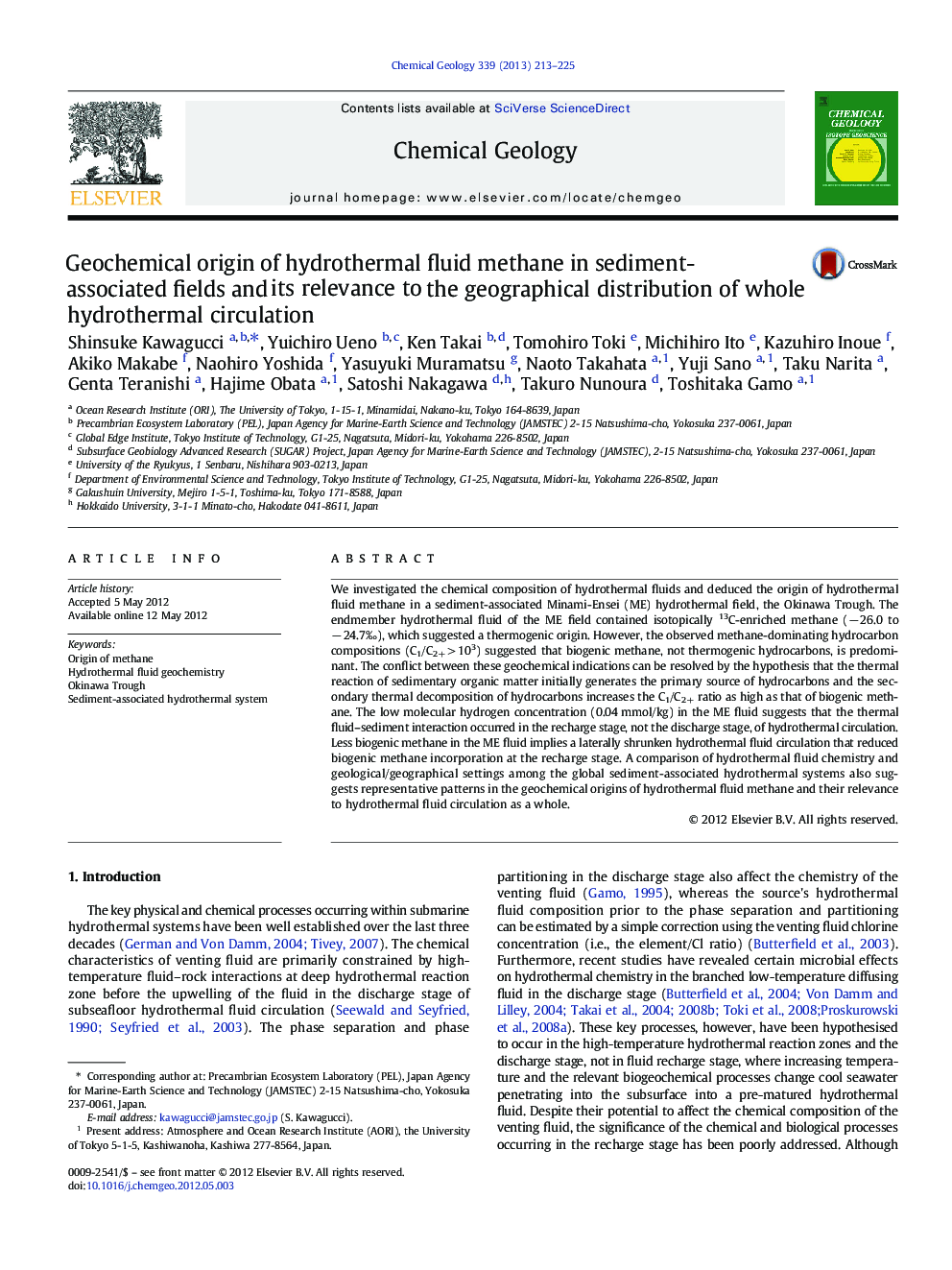| کد مقاله | کد نشریه | سال انتشار | مقاله انگلیسی | نسخه تمام متن |
|---|---|---|---|---|
| 4699140 | 1637629 | 2013 | 13 صفحه PDF | دانلود رایگان |
We investigated the chemical composition of hydrothermal fluids and deduced the origin of hydrothermal fluid methane in a sediment-associated Minami-Ensei (ME) hydrothermal field, the Okinawa Trough. The endmember hydrothermal fluid of the ME field contained isotopically 13C-enriched methane (− 26.0 to − 24.7‰), which suggested a thermogenic origin. However, the observed methane-dominating hydrocarbon compositions (C1/C2+ > 103) suggested that biogenic methane, not thermogenic hydrocarbons, is predominant. The conflict between these geochemical indications can be resolved by the hypothesis that the thermal reaction of sedimentary organic matter initially generates the primary source of hydrocarbons and the secondary thermal decomposition of hydrocarbons increases the C1/C2+ ratio as high as that of biogenic methane. The low molecular hydrogen concentration (0.04 mmol/kg) in the ME fluid suggests that the thermal fluid–sediment interaction occurred in the recharge stage, not the discharge stage, of hydrothermal circulation. Less biogenic methane in the ME fluid implies a laterally shrunken hydrothermal fluid circulation that reduced biogenic methane incorporation at the recharge stage. A comparison of hydrothermal fluid chemistry and geological/geographical settings among the global sediment-associated hydrothermal systems also suggests representative patterns in the geochemical origins of hydrothermal fluid methane and their relevance to hydrothermal fluid circulation as a whole.
► Methane with δ13C = ~− 25‰ and C1/C2 > 103 was found in the ME hydrothermal fluids.
► The δ13C and C1/C2 indications are conflict.
► Primary thermogenic hydrocarbons and secondary decomposition solves the conflict.
► Relevance between fluid geochemistry and subseafloor fluid circulation.
Journal: Chemical Geology - Volume 339, 15 February 2013, Pages 213–225
